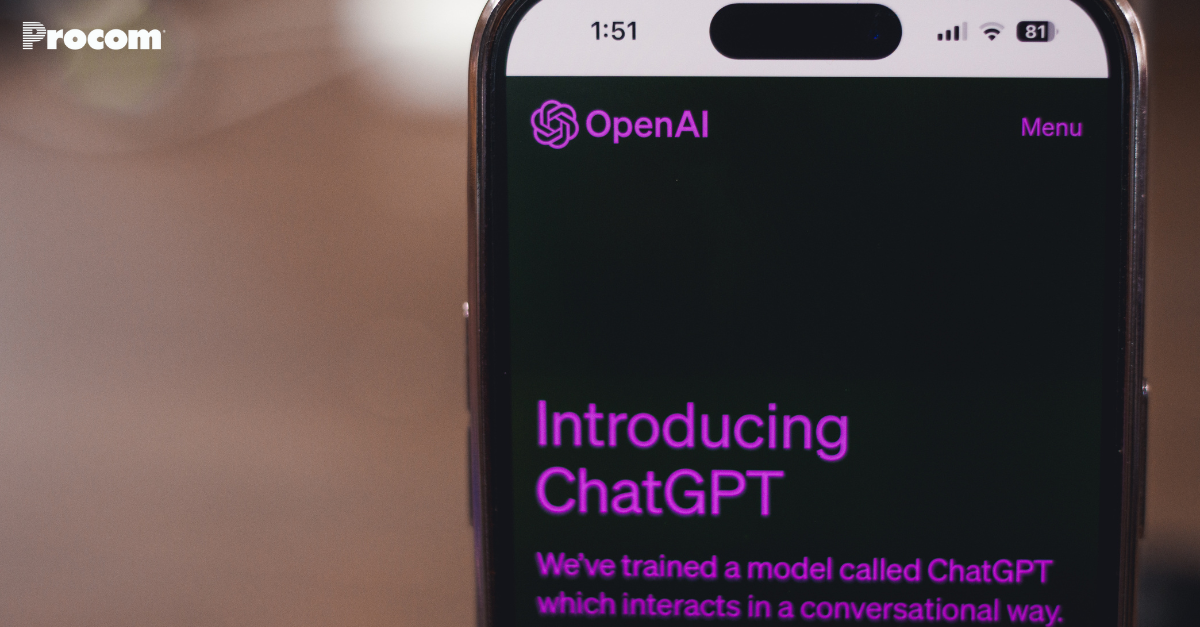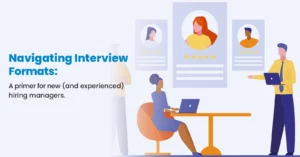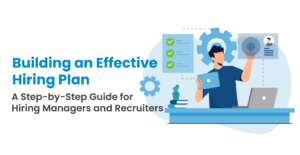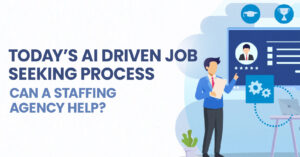ChatGPT in recruitment offers significant advantages throughout the hiring process, from devising job descriptions to engaging talent to assisting with interviews. Since its launch in late 2022, OpenAI’s ChatGPT has been alternately hailed as both a must-have, multipurpose tool and an out-of-control harbinger of doom.
It’s important, and inevitable, to note that generative AI’s use in recruiting functionalities will only continue to grow. For now, it’s critical to remember that ChatGPT and other AI applications only know what information they’ve been trained to know. ChatGPT is still developing, and maximizing its merits requires a strategy based on your hiring needs and objectives.
The information below will help get you started with the tool as more insights are released in our ChatGPT and recruitment series.
The value of ChatGPT in recruiting
Before considering how to implement ChatGPT into the recruiting process successfully, take a look at its diverse functionality and assess how these capabilities may suit your organization’s unique demands:
Automate repetitive tasks
Although ChatGPT is a language-focused application, its expansive artificial intelligence accommodates the automation of many repetitive tasks. It can be a significant time-saver when placing and tracking job postings, responding to inquiries, scheduling interviews and gathering market research.
Craft job descriptions and job postings
Generating job descriptions and job postings are two areas in which ChatGPT both shines and needs occasional polishing. As a recent HR Dive article about the future of ChatGPT in recruiting points out, Learning Language Models (LLMs) like ChatGPT sometimes produce outdated or erroneous information or may not have access to updated information about certain job roles and specific skills.
At the very least, however, ChatGPT and other LLMs can provide a solid foundation for job descriptions and job postings that may be refined with minimal human time investment. ChatGPT can also be used to maintain libraries of job descriptions and job postings that are easily updatable as individual positions and their associated skill sets and salary levels change.
Screen candidates and generate summaries
ChatGPT can analyze cover letters and resumes for specific preset highlights and narrow the pool of viable candidates. For example, if a position has particular language requirements or relevant software skills, ChatGPT can screen candidate responses and help hiring managers focus on the appropriate talent.
ChatGPT can also assist with creating candidate summaries during shortlisting and interviewing. This allows hiring stakeholders to quickly assemble and share relevant information about favored candidates.
Create interview questions
When you need assistance tailoring interview questions to a specific position, ChatGPT can often provide a spark. It can parse existing information relative to predefined job roles and skill sets and produce relevant questions based on its knowledge and additional inputs.
As with job descriptions and job postings, ChatGPT can further sustain a growing database of interview questions. This question bank can be quickly and easily revised, and its contents can be sorted in various ways, including job roles and applicable skills.
Compile Boolean search strings
Another area in which ChatGPT can be beneficial but needs some oversight is in the creation of Boolean search strings. With thoughtful and clear input regarding job roles and skills terminology, ChatGPT can “write” usable Boolean search strings.
But remember that semantics matter — for instance, clarification is needed for descriptors like “engineer” or “developer” — and that ChatGPT may not inherently understand the linguistic inputs of “and”s and “or”s unless they’re specified as programmatic differentiators, i.e., “AND” or “OR”. Once Boolean search strings are established, ChatGPT can maintain a library for future use.
Embracing ChatGPT in recruiting
The effective integration of ChatGPT into your recruiting approach hinges on the following factors:
Define your recruitment needs and goals
Understand your immediate and long-term recruiting objectives. Evaluate individual roles, their corresponding skills and experience, and other criteria that are important to your organization; think about how these elements will evolve in the coming years.
Determine ChatGPT’s place in recruitment processes
Decide where and how you want to deploy ChatGPT. For example, are your most pressing needs in candidate outreach and talent screening?
Or do you want to implement ChatGPT in every possible phase of recruiting? Identify the functions that best suit your pain points and objectives, and look for opportunities for ChatGPT to help with efficiency and future needs.
Provide ongoing training
ChatGPT’s knowledge base is continually growing, and for optimal performance at a localized level, it must be trained with appropriate data. This includes but is not limited to the input of job descriptions, skills data, wage levels, quality resumes, organizational information and other apt details.
Continue to feed ChatGPT updated and new knowledge. The more accurate and current information ChatGPT has access to, the more constructively it can be used through multiple recruitment phases.
Track ChatGPT’s results and refine its use
As you work with ChatGPT over time, monitor its performance and watch for areas where its use may either be improved or expanded. Is it successfully screening candidates, or is it overlooking qualified talent?
Is it freeing hiring leaders from repetitive tasks so they can focus on more crucial duties? Do its learning parameters need to be expanded to align with shifting recruiting goals?
For the foreseeable future, ChatGPT may be more Swiss Army knife than magic wand. Still, when it’s incorporated attentively and deliberately in your recruiting operations, ChatGPT can streamline the overall hiring process and accelerate the time to hire, which ultimately elevates the talent experience as well.
The Voice of Talent Report: State of the Workforce
Procom surveyed 1, 740+ contingent and permanent workers across the United States and Canada to uncover what’s most important to them amidst heightened expectations, competition and uncertainty.
We have distilled the data into actionable insights you can leverage to strengthen your position as an employer of choice and access the skills you need. You can get your copy below.




